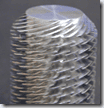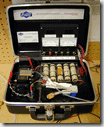In 1999 PADT started looking for ways to leverage our various skills to further develop some intellectual property. We had been doing projects for a variety of customers who were participating in the Small Business Innovative Research program through the federal government (SBIR), and we thought it might not be a bad idea to try going for a few SBIR’s of our own to help us get from that “startup” stage to the “established” phase. It worked, over the following ten years PADT was successfully awarded 13 SBIR grants.
While we were in the thick of it we really did not keep track of things from a marketing perspective. But as we prepare to launch the new Product Development portion of the PADT Blog, we thought it would be a good time to look back and summarize what we did and share it with our readers.
One thing that sets PADT apart in the world of SBIR’s is our high level of commercialization. Although not all of the awards PADT received turned into commercial products, many did. And bits and pieces from each project help PADT increase our experience and tool set.
Here is a list of the SBIR’s we have been awarded over the years:












![clip_image002[5] clip_image002[5]](https://www.padtinc.com/wp-content/uploads/2022/02/clip_image0025_thumb.jpg)


















